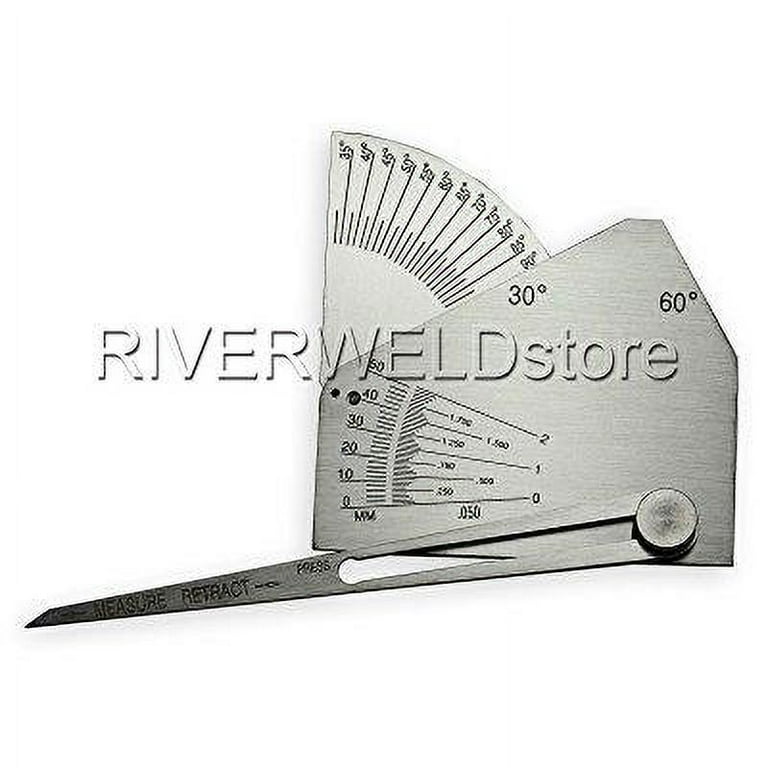Top Strategies for Measuring Gauge Fillet Weld Properly
Top Strategies for Measuring Gauge Fillet Weld Properly
Blog Article
Innovative Methods to Fillet Weld Evaluation and Testing: Enhancing Weld High Quality and Conformity Requirements
In the world of welding, the high quality and stability of fillet welds play an important role in making certain the architectural soundness and integrity of different commercial parts. With the constant drive for improved efficiency and compliance with stringent standards, the expedition of cutting-edge techniques to fillet weld inspection and screening has come to be important. As markets advance, the conventional techniques may no more suffice in meeting the demands of modern-day welding applications (Gauge Fillet Weld). By welcoming cutting-edge technologies and approaches, a brand-new horizon of possibilities emerges in the world of weld top quality evaluation and adherence to compliance standards.
Advanced Non-Destructive Testing Approaches
Using advanced technologies, advanced non-destructive screening methods play a critical function in making certain the integrity and quality of fillet welds. These methods, such as phased selection ultrasonic testing (PAUT) and magnetic particle screening (MPT), deal in-depth understandings right into the weld's internal framework without causing any type of damage to the material. PAUT, as an example, uses multiple ultrasonic components to inspect the weld from numerous angles, providing a thorough visualization of prospective problems like absence of fusion or cracks.
In A Similar Way, MPT is reliable in detecting surface-breaking problems by applying a magnetic area and iron fragments to the weld area. This technique is especially useful for recognizing gaps that may endanger the weld's stamina. By utilizing these sophisticated non-destructive screening strategies, weld examiners can accurately assess the top quality of fillet welds, ensuring compliance with market criteria and policies. The capacity to spot defects early on not only improves weld high quality yet additionally stops pricey rework or failures in architectural stability, underscoring the significance of these ingenious screening strategies in welding inspections.
Robotics and Automation in Examination

The combination of robotics and automation has actually revolutionized the assessment procedure for fillet welds, enhancing efficiency and precision in top quality analysis. Robotics provide exact control and repeatability in inspecting welds, making certain consistent and trustworthy outcomes. Automated systems can be programmed to adhere to certain evaluation courses, ensuring detailed coverage of welds and decreasing the risk of human error.
Robot inspection systems furnished with innovative sensing units can identify and gauge weld features with high precision, providing in-depth data for analysis. These systems can identify defects such as cracks, absence of combination, and porosity, allowing timely rehabilitative actions to be taken. Additionally, robotics and automation enable for real-time information collection and evaluation, offering immediate responses to drivers and assisting in quick decision-making processes.
Furthermore, making use of robotics and automation in fillet weld assessment enhances general efficiency by minimizing examination times and raising assessment throughput. By improving the inspection process, makers can guarantee weld top quality and compliance standards are fulfilled successfully, eventually leading to cost financial savings and enhanced item high quality.
Making Use Of Artificial Intelligence for Evaluation
Expert system plays an essential role in enhancing the performance and accuracy of evaluation in fillet weld evaluation processes. By using the power of AI, examiners can simplify the evaluation of weld quality and conformity standards, leading to more reputable and accurate results. AI algorithms can swiftly process substantial quantities of data from weld examinations, identifying flaws or inconsistencies that might be challenging to relate to the nude eye. This innovative technology enables real-time monitoring of weld quality, permitting immediate restorative actions to be taken if any kind of issues are identified.
Moreover, AI systems can learn from previous assessment information, consistently improving their ability to recognize possible flaws and deviations in fillet welds. This flexible knowing ability enhances the total quality assurance process, lowering the possibility of human error and guaranteeing that welds meet the needed standards. By incorporating expert system into fillet weld analysis, sectors can accomplish greater levels of performance, uniformity, and conformity in their inspection methods.
Portable Devices for On-Site Inspection
Enhancing area examination performance, the fostering of mobile tools changes on-site evaluation processes for fillet welds. These devices supply adaptability and ease, enabling inspectors to perform extensive exams in various places, consisting of challenging or remote atmospheres. Portable tools such as ultrasonic testing tools, published here magnetic particle evaluation equipment, and electronic radiography systems give real-time data see page and high-resolution imaging abilities, enabling quick decision-making and prompt responses on weld high quality.
One significant advantage of portable tools is their capacity to improve inspection procedures, minimizing downtime and boosting total efficiency - Gauge Fillet Weld. Examiners can conveniently transfer these devices to various job sites, getting rid of the demand for transferring hefty equipment or components to off-site centers. Furthermore, the transportability of these devices promotes cost-effectiveness by lessening transportation costs and accelerating evaluation timelines
Moreover, using mobile devices for on-site inspection promotes positive quality assurance actions, as examiners can without delay recognize and resolve any possible welding defects or discrepancies. By including these cutting-edge technologies right into on-site inspection practices, welding specialists can make sure conformity with industry criteria and enhance weld top quality, inevitably causing enhanced architectural integrity and security in different welding applications.
Combination of Information Administration Systems

Having maximized on-site examination processes with the application of portable devices, the following stage involves the smooth combination of information management systems to additionally improve efficiency and information evaluation abilities in fillet weld inspection and screening. By integrating information administration systems into the examination process, companies can improve information collection, storage space, and analysis. This assimilation permits real-time surveillance of weld quality, instant recognition of problems, and timely decision-making to rectify any issues that might develop throughout the evaluation process.
The assimilation of information administration systems enables seamless communication in between different stakeholders entailed in the inspection procedure, fostering partnership and boosting general top quality control actions. Ultimately, the combination of data monitoring systems offers to raise the standards of fillet weld evaluation and testing, making sure compliance with sector regulations and enhancing weld high quality.
Verdict
In final thought, innovative strategies to fillet weld assessment pop over to this web-site and screening have considerably boosted weld high quality and compliance requirements. Advanced non-destructive testing approaches, robotics, automation, expert system, mobile tools, and data management systems have changed the method weld evaluations are conducted. By making use of these modern technologies, industries can guarantee that welds fulfill the called for quality standards and guidelines, eventually improving overall efficiency and security in welding processes.

Having actually maximized on-site inspection processes via the utilization of portable devices, the next phase includes the seamless combination of data administration systems to better enhance effectiveness and information evaluation capacities in fillet weld assessment and testing. Eventually, the integration of data management systems serves to boost the criteria of fillet weld evaluation and screening, ensuring conformity with market laws and improving weld high quality.

Report this page